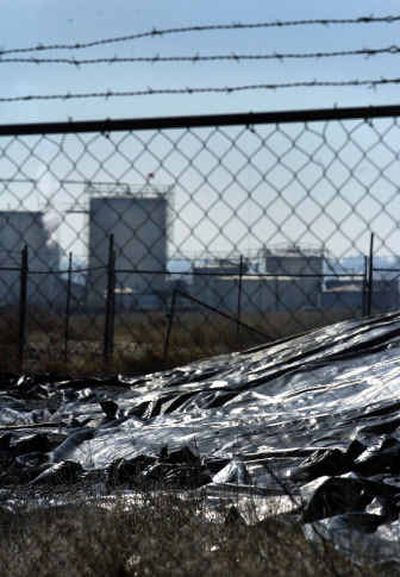Site a hazard for children

A lead-tainted Hillyard site already ranked Spokane County’s most dangerous is a health hazard to children 6 years old and younger who play there more than twice a week, according to a new warning from the Washington State Department of Health and the federal Agency for Toxic Substances and Disease Control.
Although children are unlikely to be at the Hillyard lead site every day, lead concentrations “are sufficiently high in some areas to be of concern,” the report says. It also warns that lead in blowing dust could migrate to nearby homes.
The advisory was released this week. It says parents who live near the site, between the 4800 and 5300 blocks of North Ferrall, should have their children’s blood tested for possible elevated lead levels. Lead is highly dangerous to the developing bodies of small children, who are exposed primarily through breathing dust or eating soil.
The Spokane Regional Health District has ranked the site a 1 – most hazardous – on a scale of 1 to 5 because children have been playing there, said the district’s Michael LaScuola. The Spokesman-Review reported on the site’s hazards March 6 and said a new health advisory was imminent.
Parents with questions should call the health district at (509) 324-1574. The district will explain the advisory, but families will have to go to their own doctors for the blood tests, said Spokane County Health Officer Dr. Kim Thorburn.
The assessment of the defunct Hillyard rail yard was conducted at the request of the regional health district, said Lenford O’Garro of the state health department in Olympia.
The lead site, now owned by BNSF Railway, also ranks as the most hazardous of 54 toxic waste sites in Spokane County because of the potential for human exposure, according to the Washington Department of Ecology’s most recent rankings. BNSF acquired the former rail yard and right of way from the Great Northern Railroad Co. in the 1970s.
The soil has been covered and fenced and BNSF is working with Ecology on a disposal plan, said railroad spokesman Gus Melonas.
BNSF demolished the site’s buildings in the 1980s, but soil that the railroad planned to use as a final cover on a nearby site, the Hillyard dross landfill, remained. During tests in 2001 and 2002, a railroad contractor discovered the soil spread over 140,000 square feet was contaminated with lead.
In July 2002, about 8,640 cubic yards of the tainted soil was fenced and covered with plastic. The soil also contains arsenic and cadmium and may be contaminated as well with petroleum and other chemicals, according to the report. Lead in the soil measured between 26.5 and 35,400 parts per million, with an average of 2,301 ppm – more than twice the state’s cleanup level for industrially zoned land.
Children 6 and younger are most vulnerable to lead because of their growing brains and their tendency to ingest dirt and soil. The U.S. Centers for Disease Control has defined an elevated blood level as greater than 10 micrograms of lead per deciliter of blood – a speck of metal in a half cup of blood. However, developmental problems have occurred in children at blood-lead levels below 10 micrograms, the report says.
Depending on the amount of exposure, lead can cause behavior and learning problems, central nervous system damage, kidney problems, stunted growth, hearing impairment and anemia.
The blood-lead exposure model used for the study predicts that children playing there two days or more each week could have an elevated blood-lead level of 11.4 micrograms. It also said any future housing development on the site could result in additional elevated lead levels in small children.